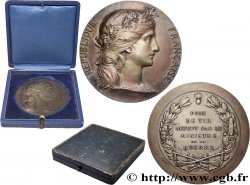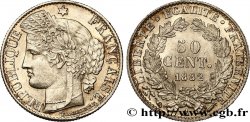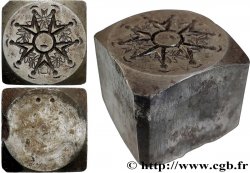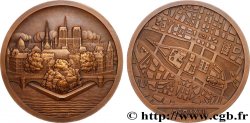Чтобы принять участие в торгах, вы должны войти в систему и стать подтвержденным участником аукциона. Войдите, чтобы сделать ставку. Ваш аккаунт будет подтвержден в течение 48 часов. Не ждите до закрытия торгов, чтобы зарегистрироваться.Сделав ставку на данный товар, вы вступаете в юридическое соглашение на покупку выбранного товара и нажатием кнопки «Сделать ставку» подтверждаете принятие вами условий интернет-аукционов cgb.fr.
Ставка может бить сделана только в полном эквиваленте евро. Торги закроются согласно времени, указанному в описании товара, все ставки, сделанные после закрытия торгов, учитываться не будут. Не следует откладывать предложение вашей ставки до последнего момента, так как система может не успеть обработать вашу заявку, и ваша ставка не будет принята. Более детальную информацию вы найдёте здесь: FAQ по интернет-аукционам.
Все ставки победителей подлежат комиссии 18%.
Все ставки победителей подлежат комиссии 18%.
| Оценить : | 600 € |
| Цена : | 1 250 € |
| Максимальная предлагаемая цена : | 1 300 € |
| Конец торгов : | 04 March 2025 17:32:05 |
| Участников : | 4 Участников |
Тип Médaille, Fuller, Loïe, n°59
Дата: 1900
Количество отчеканенных монет: 275
Металл: silver
Диаметр: 71,5 mm
Ориентация осей монеты: 12 h.
Гравер ROCHE Pierre (1855-1922)
Вес: 165,7 g.
Век: lisse + corne ARGENT + lézard + 59
Пуансон: corne BRONZE
Комментарии о состоянии
Médaille anciennement nettoyée. Patine hétérogène avec quelques traces d’usure. Présence de quelques fines rayures sur la tranche
Ссылки в каталоге: :
Лицевая сторона
Аверс: легенда: FVLLER / LOÏE.
Аверс: описание: Femme dansant.
Обратная сторона
Реверс: легенда: 1900 / VN ETRE / QVI / N ETAIT / QVE / LVMIERE EOR ET CAZE / BAVDELAIRE.
Реверс: Описание: Légende en 7 lignes sur une paire d’arômes en sautoir. Signature monogramme : DP.
Комментарий
L’émission de cette médaille est la suivante : 157 exemplaires en bronze, 109 exemplaires en argent, 2 exemplaires en bronze argenté et 1 exemplaire en or (4 exemplaires Dep. et 2 exemplaires artistes).
Née aux Etats-Unis dans l'Illinois, Mary Louise Fuller (1862-1928), dite Loïe Fuller, a fait ses débuts au théâtre des Folies Bergère à Paris fin 1892. Elle a créé un nouveau style de danse en associant dans ses mises en scène des mouvements de voiles et des effets de lumière colorés. Elle a inspiré de nombreux artistes du symbolisme et de l'Art nouveau, dont Pierre Roche qui entre tenait une relation très étroite avec elle. Il lui a dédié bon nombre d'œuvres, statuettes, dessins et bas-reliefs notamment, et a même orné le pignon de sa maison d'une girouette représentant la danseuse. En 1900, lors de l'Exposition universelle de Paris, Loïe Fuller a fait construire par l'architecte Henri Sauvage son propre pavillon-théâtre pour lequel Roche a créé des décorations et une grande statue. Lui aussi profondément impressionné par les représentations spectaculaires de la danseuse, le critique d'art Roger Marx lui consacra un article, le 1 février 1893, peu après ses premières apparitions à Paris. En 1894, il envisagea avec Roche la rédaction d'un livre illustré d'estampes modelées publié dix ans plus tard sous le titre La Loïe Fuller. Dans ce contexte, il n'est pas surprenant que Roche ait créé pour la SAMF une médaille dédiée à la danseuse. C'est Marx qui a choisi l'inscription du revers reprenant un vers emprunté au poème L'Irréparable de Charles Baudelaire : Un être, qui n'était que lumière, or et gaze. Sans doute à l'initiative de son fondateur, la Société a fait graver en argent un exemplaire supplémentaire de la médaille qui a été remis à Loïe Fuller.
The issue of this medal is as follows: 157 examples in bronze, 109 examples in silver, 2 examples in silver-plated bronze and 1 example in gold (4 examples Dep. and 2 artist examples).
Born in Illinois in the United States, Mary Louise Fuller (1862-1928), known as Loïe Fuller, made her debut at the Folies Bergère theatre in Paris at the end of 1892.. She created a new style of dance by combining veil movements and colored light effects in her productions.. She inspired many Symbolist and Art Nouveau artists, including Pierre Roche, who had a very close relationship with her.. He dedicated a number of works to her, including statuettes, drawings and bas-reliefs, and even decorated the gable of his house with a weather vane representing the dancer.. In 1900, during the Paris World's Fair, Loïe Fuller had her own pavilion-theatre built by the architect Henri Sauvage, for which Roche created decorations and a large statue.. Also deeply impressed by the dancer's spectacular performances, the art critic Roger Marx devoted an article to her on February 1, 1893, shortly after her first appearances in Paris.. In 1894, he and Roche considered writing an illustrated book of modeled prints, published ten years later under the title La Loïe Fuller. In this context, it is not surprising that Roche created a medal for the SAMF dedicated to the dancer. It was Marx who chose the inscription on the reverse, which takes a line from the poem L'Irréparable by Charles Baudelaire: A being, who was only light, gold and gauze. Probably on the initiative of its founder, the Society had an additional example of the medal engraved in silver, which was presented to Loïe Fuller.
Née aux Etats-Unis dans l'Illinois, Mary Louise Fuller (1862-1928), dite Loïe Fuller, a fait ses débuts au théâtre des Folies Bergère à Paris fin 1892. Elle a créé un nouveau style de danse en associant dans ses mises en scène des mouvements de voiles et des effets de lumière colorés. Elle a inspiré de nombreux artistes du symbolisme et de l'Art nouveau, dont Pierre Roche qui entre tenait une relation très étroite avec elle. Il lui a dédié bon nombre d'œuvres, statuettes, dessins et bas-reliefs notamment, et a même orné le pignon de sa maison d'une girouette représentant la danseuse. En 1900, lors de l'Exposition universelle de Paris, Loïe Fuller a fait construire par l'architecte Henri Sauvage son propre pavillon-théâtre pour lequel Roche a créé des décorations et une grande statue. Lui aussi profondément impressionné par les représentations spectaculaires de la danseuse, le critique d'art Roger Marx lui consacra un article, le 1 février 1893, peu après ses premières apparitions à Paris. En 1894, il envisagea avec Roche la rédaction d'un livre illustré d'estampes modelées publié dix ans plus tard sous le titre La Loïe Fuller. Dans ce contexte, il n'est pas surprenant que Roche ait créé pour la SAMF une médaille dédiée à la danseuse. C'est Marx qui a choisi l'inscription du revers reprenant un vers emprunté au poème L'Irréparable de Charles Baudelaire : Un être, qui n'était que lumière, or et gaze. Sans doute à l'initiative de son fondateur, la Société a fait graver en argent un exemplaire supplémentaire de la médaille qui a été remis à Loïe Fuller.
The issue of this medal is as follows: 157 examples in bronze, 109 examples in silver, 2 examples in silver-plated bronze and 1 example in gold (4 examples Dep. and 2 artist examples).
Born in Illinois in the United States, Mary Louise Fuller (1862-1928), known as Loïe Fuller, made her debut at the Folies Bergère theatre in Paris at the end of 1892.. She created a new style of dance by combining veil movements and colored light effects in her productions.. She inspired many Symbolist and Art Nouveau artists, including Pierre Roche, who had a very close relationship with her.. He dedicated a number of works to her, including statuettes, drawings and bas-reliefs, and even decorated the gable of his house with a weather vane representing the dancer.. In 1900, during the Paris World's Fair, Loïe Fuller had her own pavilion-theatre built by the architect Henri Sauvage, for which Roche created decorations and a large statue.. Also deeply impressed by the dancer's spectacular performances, the art critic Roger Marx devoted an article to her on February 1, 1893, shortly after her first appearances in Paris.. In 1894, he and Roche considered writing an illustrated book of modeled prints, published ten years later under the title La Loïe Fuller. In this context, it is not surprising that Roche created a medal for the SAMF dedicated to the dancer. It was Marx who chose the inscription on the reverse, which takes a line from the poem L'Irréparable by Charles Baudelaire: A being, who was only light, gold and gauze. Probably on the initiative of its founder, the Society had an additional example of the medal engraved in silver, which was presented to Loïe Fuller.








 Cообщить об ошибке
Cообщить об ошибке Распечатать страницу
Распечатать страницу Отправить мой выбор
Отправить мой выбор Задать вопрос
Задать вопрос Consign / sell
Consign / sell
 Информация
Информация















